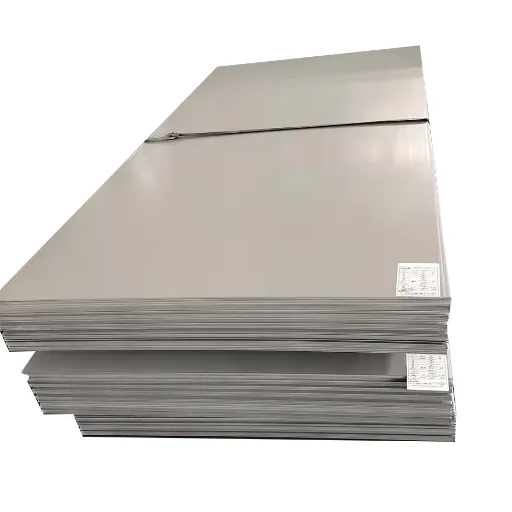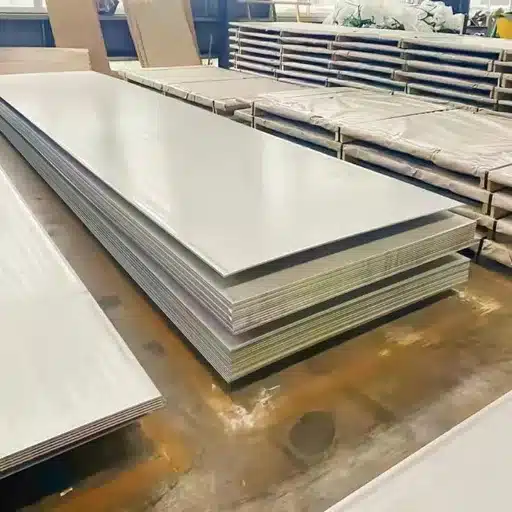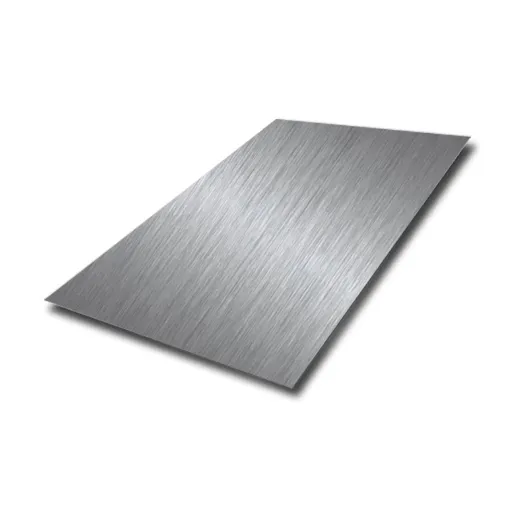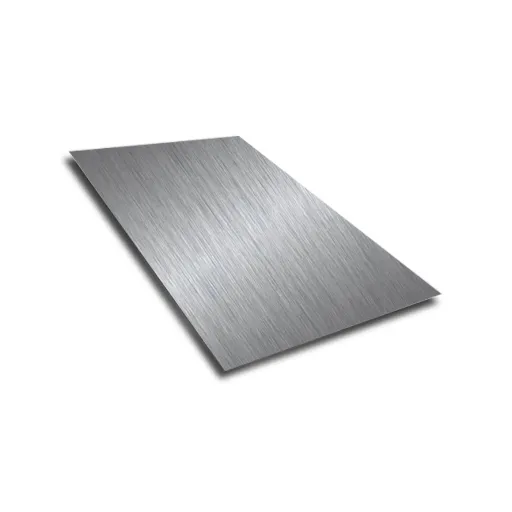In terms of industrial applications, the capacity of schedule pipes relies on the proper identification of the different suitable types of pipes that should be used in a particular application. It is very common to find two pipes being selected; one greater than another, such as Schedule 40 and Schedule 80, and each will be designed to have unique characteristics that will make them suitable for particular duties. But the question is: how much thinner are the Schedule 40 and Schedule 80 pipes with respect to each other, and how much load they can carry, pressure-wise, and what makes one tube more suitable for specific uses than others? This article will aim to compare in detail the strengths of Schedule 40 and Schedule 80 pipes by discussing their structural variations, benefits, and exercise applications. Whether you are an engineer, a sportsman, or a do-it-yourself person, you are going to appreciate the information in this article, which will enable you to buy the right pipe for your project.
Introduction to Pipe Schedules
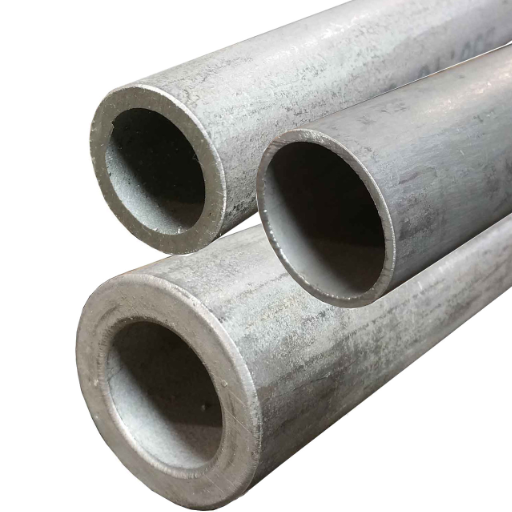
Pipe schedules refer to the standardized wall thickness of pipes, which directly impacts their burstiness and pressure performance. The term ‘schedule’ specifies the relationship of the wall thickness of a pipe with respect to its nominal pipe size. Common schedules include 40 and 80, where Schedule 80 pipes have a thicker wall than Schedule 40 pipes. This added thickness makes Schedule 80 pipes more useful in high-pressure and industrial applications, where Schedule 40 is more suitable for general-purpose systems. The understanding of the pipe schedule is critical in the selection of its type, considering the pressure and application, to avoid the likelihood of system failure.
What Are Pipe Schedules?
Pipe schedules mean the wall thickness of the pipes in terms of their diameters to provide critical information necessary for engineering and industrial applications. Having become part of ASME (American Society of Mechanical Engineers) and ASTM (American Society for Testing and Materials) standards, they are calculated numerically and include known names such as Schedule 5, Schedule 10, Schedule 40, and Schedule 80. The numbers then refer to one particular dimension of the pipe’s wall thickness at a certain nominal pipe size, nominal pipe size (NPS).
One good example here is the use of Schedule 40 pipes in both residential and commercial plumbing simply because they are capable of retaining both durability and cost efficiency. Contrary to Schedule 80 pipes, which also feature a thicker wall, are used in high-pressure systems or pipelines meant for highly corrosive liquids like high-grade chemical plants and even high-pressure steam plants. It should be added that as the nominal size of the pipe grows, that is, the difference in wall thickness between the schedules increases, the flow rate, the weight of the system, and the pressure carrying capacity get affected.
Importance of Pipe Schedules in Strength and Functionality
Pipe schedules are very important in evaluating the functionality and ease of using a piping system, principally in the presence of high stresses. The wall thickness within the schedule of the pipe is indicative of the extent of internal pressure that can be contained within the pipe as well as the manner in which the pipe can be expected to resist external forces during transportation. For example, depending on the type of pressure used, Schedule 40 pipes are typically designed for low levels of pressure and have certain rupture and tensile performance levels that sharply contrast with those of Schedule 160 pipes, which are built specifically for heavy applications.
Progress in material science and engineering has improved the knowledge on the impact of pipe schedules on such factors as thermal expansion, resistance to corrosion, mechanical wear, and the like. The additional thicknesses not only give a safety factor but also enhance the system’s working life, especially where high temperature and/or harsh chemicals are involved. Moreover, adequate identification of pipe schedules enables the achievement of relevant specifications such as those providing for power piping systems as per ASME B31.1 or materials characteristics specified as per ASTM. This helps to ensure both operational reliability and compliance.
When deployed along with the up-to-date engineering analysis, i.e. finite element analysis and CFD, an appropriate pipe schedule can be viewed as a key factor in the system’s optimization. This applied detail has practical applications where failure is unacceptable such as in the case of the petrochemical field, nuclear power generation or aerospace engine plumbing systems. This is why the practical interpretation of pipe schedule clauses as included in the construction of safe and effective pipework arrangements is a basic necessity.
Detailed Comparison of Schedule 40 and Schedule 80
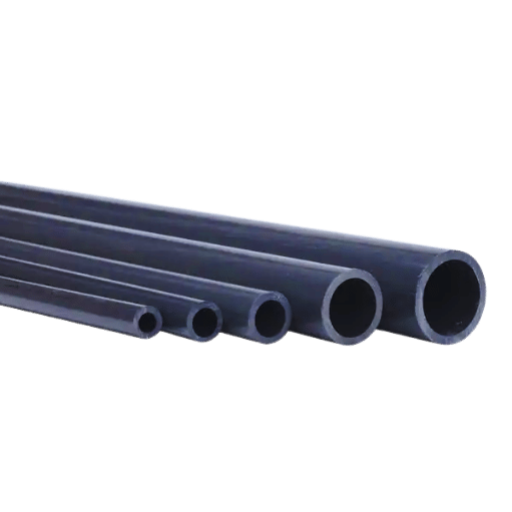
- Wall Thickness
A major difference between Schedule 40 and Schedule 80 pipes is the thickness of the pipe walls. In comparison, it has been mentioned that Schedule 80 pipes have higher internal pressure control operating capacity because of the more compact walls. More robust due to more physical squatness, these pipeline versions in Schedule 80 can be more robust than the ones in Schedule 40.
- Pressure Tolerance
In most cases, Schedule 80 pipes receive lesser rating when it is about their burden than the pipes of the same standard and material but with schedule 40. Hence, schedule 80 is the best for use in these applications since it can accommodate high pressures that could be used in a hydraulic system or even chemical processing operations.
- Weight and Cost
- Application Suitability
Normally, it is common to use Schedule 40 pipes due to the boundary conditions sufficing for the minor pressure level, namely, edible vegetable oil and other low temperature demands, roof water drainage, air conditioning, and air cooling systems in houses, and the machine building industry without straining the regular excessive use. Conversely, Schedule 80 pipes are made for extremely high-pressure environments such as chemical processes or air compressor distribution systems employed in industrial environments.
Key Differences Between Schedule 40 and Schedule 80 Pipe
|
Key Parameter |
Schedule 40 |
Schedule 80 |
|---|---|---|
|
Wall Thickness |
Thinner walls |
Thicker walls |
|
Internal Diameter |
Larger diameter |
Smaller diameter |
|
Pressure Rating |
Lower pressure tolerance |
Higher pressure tolerance |
|
Weight |
Lighter |
Heavier |
|
Material Strength |
Suitable for moderate strength |
Suitable for higher strength |
|
Application Suitability |
Ideal for low-pressure systems |
Ideal for high-pressure systems |
|
Cost |
More economical |
More expensive |
|
Fluid Flow Capacity |
Higher due to larger diameter |
Lower due to smaller diameter |
|
Resistance to Stress |
Lower stress resistance |
Higher stress resistance |
|
Common Usage |
Residential, low-stress settings |
Industrial, high-stress settings |
Pressure Ratings for Schedule 40 vs Schedule 80
The difference in pressure ratings of Schedule 40 and Schedule 80 pipes is based on the difference in the walls and material strength. Schedule 40, where the wall is thin, the pressure rating is very low, making it suitable for applications with low operating pressure. For example, a 1-inch Schedule 40 PVC pipe has a pressure rating at 73°F of about 450 PSI. However, Schedule 80 pipes call for higher pressure. A 1-inch Schedule 80 PVC pipe can withstand pressure up to approximately 630 PSI at the same temperature.
Notes like Caution, attention is also warranted because as the application temperature rises, the available pressure rating tends to fall, which is a factor in the ratings of the systems. The temperature also produces a huge difference in these ratings, as all these pipes have the same pressure capacities, and PVC and CPVC can also be added. Information of this nature is necessary to assist in the selection of the best types of pipes for the purpose of any industrial, commercial or residential field of application and the reduction of the risk of failure under operational conditions. In all situations, however, reference should be made to the pressure rating of the manufacturer with respect to the data and the inability of its application to the very materials.
Dimensions and Size Differences
The various sizes and dimensions of pipes are standardized to ensure that they are compatible in a variety of applications and systems. The nominal pipe size (NPS) and schedule number, which indicate the pipe wall thickness, are the two most important parameters used in the determination of the type of classification of pipes available to users. The NPS standard provides an estimate of the inside diameter of the pipe whereas the difference in the wall thickness, given by the schedule number, determines the inside diameter and the capacity-pressure relationship. In the case of a Schedule 40 pipe, the wall will be thinner as opposed to a Schedule 80 pipe having the same nominal size, which explains the difference in flow rates and pressure capabilities of the two pipes.
The effective diameter inside the pipe always differs from the nominal diameter, especially for smaller sizes, so this parameter plays a major role when it comes to the compatibility of that pipe with different fittings. Such pipe specifications as ASTM, ASME, and Iso supply distinguished sizes and range tolerances for each size, making sure that when it comes to installing various sizes of pipes, which are industrial or commercial, there is uniformity around the world. By following the standards and the specific needs of a particular system, engineers can identify the most appropriate pipe dimensions and thus optimize the system for greater efficiency, usage, and safety.
Applications in Various Industries
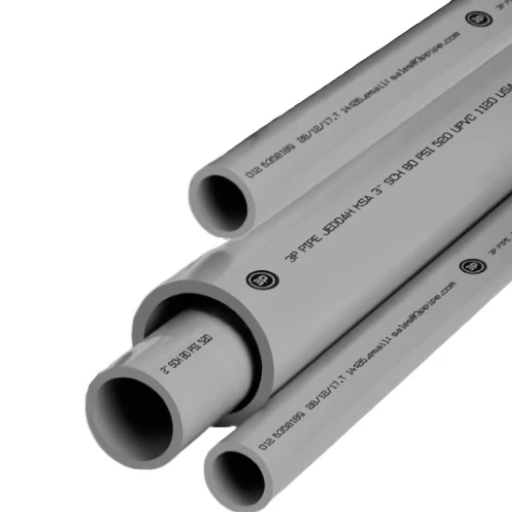
- Oil and Gas Industry
Piping systems used for the movement of raw, crude oil, and refined petroleum manufactured goods are a key part of the oil and gas business. For these reasons, materials such as carbon steels and steel higher alloys are the most common in withstanding the harsh conditions. For example, based on reports of the IEA, more than 70% of all crude transport takes place using pipeline systems instead of other transportation modes.
- Chemical and Petrochemical Industry
Pipes in the chemical industry should be able to resist attacks from chemicals. Additionally, types of anti-corrosive materials include stainless steel, composites and high-durability metals. For example, the American Chemistry Council estimates that over 50% of the funds invested in this field concentrate on piping systems that meet safety standards and technical resistance properties against chemicals are incorporated.
- Power Generation
When operating power plants, whether nuclear, thermal, or renewable, one must consider the intricate piping used in the process – this is for the transmission of steam or water within these systems. Many applications where there are high pressures and temperatures present in the pipework require the use of different materials like advanced steels and superalloys. Such would be the case of piping systems for nuclear reactors, which are designed with stringent ASME BPVC guidelines to ensure the structural integrity of the system over an extended time duration.
- Water and Wastewater Management
Both urban and industrial systems extensively use pipes for the purpose of water distribution and sewerage treatment. Among the most common materials in use for laying pipes in water and sewerage systems are PVC, ductile iron pipe, and polyethylene pipes because they are inexpensive and long-lasting. Urban Water Institute of the American Society of Civil Engineers (ASCE) states that as much as 90% of the urban water infrastructure utilizes such materials for water delivery and release purposes, as they are the most cost-effective.
- HVAC (Heating, Ventilation, and Air Conditioning)
Construction Industry Uses: When to Use Schedule 80 PVC
Due to its superior strength and ruggedness, Schedule 80 PVC (Polyvinyl Chloride) is quite commonly used within the building sector in comparison to the Schedule 40 version. It is best suited for applications that require the transportation of fluids under higher pressures, such as industrial water supply systems, chemical production facilities, and waste treatment plants. In such scenarios, the higher grades of PVC are most appropriate since the chance of failing due to the stresses is diminished by the thickness of the walls in the Schedule 80 PVC pipes.
Based on a recent report conducted in the study of the market field, the growth of the demand for PVC pipes is, for example. Improved resistance to corrosion, lightweight, and cost effectiveness, PVC materials roof compared with metals. Schedule 80 PVC is mostly used where there is hot fluid flow or materials that are of abrasive wear because its layout of panels is proper. Further, the fittings available and their compatibility with cleaners and glues make the system easy to install. Such flexibility makes PVC systems highly preferred by the engineers and constructors developing systems for both industrial applications and public buildings.
Manufacturing Considerations: Steel Pipe vs PVC Pipe
Speaking of several aspects of steel tubes and pvc pipes manufacturing reveals very significant differences in the ways of production, basically due to the materials and their properties. Steel pipe corrosion is accomplished in such operations as casting, extrusion or welding. These include reheating the raw metal to a high temperature, manipulating the material in order to get the proper dimensional configurations, and hardening the material using hardening techniques. The quality of welding work and additional surface coating, like galvanizing or coating, has the potential to increase costs and is time-consuming. The rawness of the material also calls for advanced equipment that can withstand the harsh forces while the product is being made.
Advantages and Disadvantages of Each Pipe
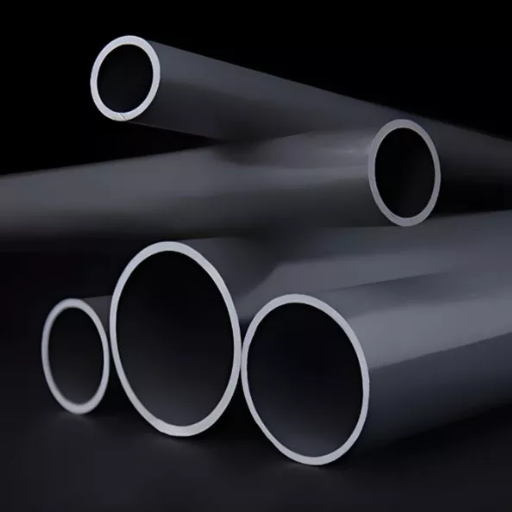
Advantages of PVC Pipes:
- Cost-Effective: Being inexpensive in raw materials and processing, PVC pipes become an economical consideration.
- Corrosion Resistance: PVC pipes stand against chemical corrosion, unlike metal pipes that suffer depending upon the environment, thus increasing their lifetime in respective environments.
- Lightweight and Easy to Install: PVC pipes are lightweight; thus, reducing the associated labor cost and time during installation.
- Customizable Properties: Enhancing certain characteristics, e.g., UV resistance or flexibility, an additive can enhance a property depending on the application’s requirement.
Disadvantages of PVC Pipes:
- Temperature Sensitivity: PVC pipe tends to perform poorly at higher temperatures; hence, it will never be used in some industrial applications.
- Low Impact Resistance at Low Temperatures: PVC becomes very brittle under extremely cold conditions, thereby raising the chancing of impact damage.
- Limited Durability Under Mechanical Stress: To produce PVC pipes and characterize physical considerations or stresses is difficult.
Advantages of Steel Pipes:
- High Strength and Durability: Steel pipes are extremely strong and are suited for transport of high pressure, for example, gaseous substances and industrial applications.
- Heat Resistance: Steel behaves perfectly under extremely high temperatures and thus is best for thermal systems.
- Versatile Applications: With their structural rigidity and strength, steel pipes provide a safe medium for construction, plumbing, and oil transport.
Disadvantages of Steel Pipes:
- Corrosion Vulnerability: Steel is rusting, which incites high maintenance, unless it is treated or coated.
- Higher Production Costs: Steel pipe needs higher amounts of energy consumption during its manufacture process, thus demanding high raw material costs as well against PVC.
- Heavy and Difficult to Handle: Because of their heaviness, the installation of steel pipes requires more manpower and in some cases mechanized installation.
Durability Comparisons
When considering a strength perspective, the steel pipe, on average, stands a cut above the PVC pipe in environmental scenarios subjected to extreme pressures and temperatures. Steel behaves under tensile and high-pressure resistance very well in industrial applications involving the transport of oil and gas and highly stressed infrastructural setups. Particularly, stainless steel is famous for corrosion resistance and longevity in marine or chemically harsh environments.
On the other hand, PVC excels in environments where resistance against chemical leaching and lightweight handling stand high on the priority list. PVC’s status of being inert to various chemicals, coupled with not being prone to rust, allows its application in the distribution of water and sewer systems. However, prolonged exposure to sunlight degrades PVC pipes, and therefore, additional precautions must be taken when laying the pipes that are exposed to sunlight.
Statistical evidence reveals that stainless steel pipe is said to last for up to 100 years under relatively favorable conditions, whereas PVC piping will last around 50 years or more, depending on specific conditions, such as temperature, chemical influence, and level of physical loads.
Flexibility and Application Suitability
Regarding flexibility in a material, PVC pipes are acknowledged as having very little resistance for installation, allowing quick deployment in construction works. The mild flexibility of the material becomes crucial in low-pressure systems or where slight ground movements could be present. On the contrary, steel-style pipes are characterized by their rigidity and strength, making them suitable under great pressures and temperatures, hence their industrial application and placement in pipe systems such as oil-gas or chemicals.
Recently, material technology has defied the applications of both PVC and stainless steel. Additives for PVC, for example, could allow enhanced resistance to temperature changes, making it possible for the material to be installed in a cold-climate area that could have been a challenge for traditional plastic piping. Stainless steel, on the other hand, can fight very corrosive environments thanks to innovations in its alloying elements, such as in the duplex and super duplex grades, used in seawater desalination plants or plants dealing with corrosive chemicals. Selection between these materials has to be made as per the requirements of the application vis-à-vis mechanical stress, chemical attacks, and ambient conditions.
Conclusion: Choosing the Right Pipe
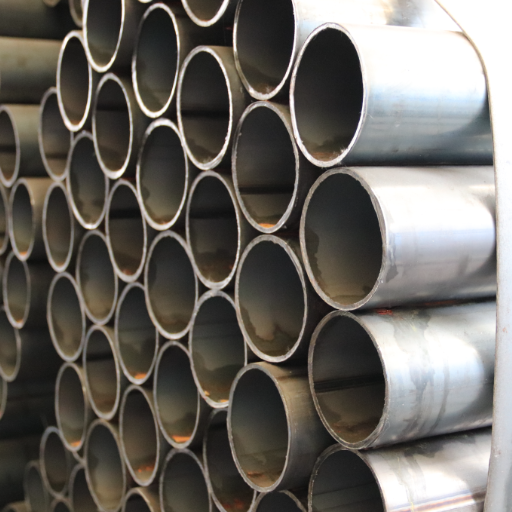
Selecting the proper pipe material would ensure any system’s performance and longevity. Where long-life performance and cost are the foci of the application, PVC or HDPE will often be good and most cost-effective materials to consider. Where the application environment exposes the system to high temperatures, corrosive substances, or mechanical stresses, a metallic system, preferably stainless steel or copper, is more reliable. Let’s note that this final decision has to be taken after careful assessment of the ongoing conditions of use and the applicable references, as well as the long-term needs to actually guarantee the best performance with fewer challenges for maintenance in the future.
Assessing Project Requirements
Project requirements must be satisfactorily analyzed concerning several variables, such as environmental factors, material compatibility, workload specifications, and regulatory requirements. Guaranteeing that the material is durable under temperature ranges or chemical exposures is a key example of this, preventing premature wear or failure of the material. It also ensures that the decision-making processes consider new enhancements in industry technology and best practices so that these are integrated for better efficiency and safety. As has been observed from data trends in similar projects, there is a measurable benefit of using these new materials and processes, including high cost-efficiency and longer operational life. Such scrupulous analysis assures that selected avenues align themselves with a project’s immediate operational constraints and long-term performance objectives, ensuring the execution of whichever project in a sustainable and efficient manner.
Environmental Conditions and Their Impact on Pipe Selection
There is a strong correlation between environmental conditions and material properties that dictate pipe system design. Soil makeup, temperature fluctuations, moisture content, or chemical exposure constitute some of the environmental variables that must be carefully considered to reach good quality and longevity of design options. In areas of higher soil acidity, corrosion-prone materials are discouraged in favor of corrosion-resistant materials that would sustain degradation, such as polyethylene-lined steel or reinforced fiberglass. Likewise, pipes subjected to wide temperature ranges may be better equipped to expand thermally by resisting cracking or warping through materials such as HDPE or polypropylene.
Above-ground applications dealing with environmental stressors such as UV radiation tend to incorporate UV stabilizers or coatings to avoid the slow deterioration of the materials. To speak in frost-risk conditions, insulation layers or heat-traced pipes are usually applied to prevent freezing up during the cold seasons and thereby maintain consistency in fluid flow. By systematically aligning material properties with specific environmental factors, engineers can create piping systems that reliably perform, meet set regulations, and meet certain standards for sustainability. Preparedness for this ensures greater safety, cost-benefit, and adherence to environmental best practices.
Reference Sources
-
Metal Supermarkets: Difference Between Schedule 40 and Schedule 80 Pipe: This article explains that the primary differences between Schedule 40 and Schedule 80 pipes are wall thickness, inside diameter, and weight. Schedule 80 pipes have thicker walls, making them stronger and more suitable for high-pressure applications. The article also highlights the importance of referencing pipe schedule charts for accurate selection.
-
PVC Pipe Supplies: Compare Schedule 40 & Schedule 80 Pipe and Fittings: This resource focuses on the structural differences, emphasizing that Schedule 80 pipes have thicker sidewalls compared to Schedule 40 pipes of the same diameter and material. It discusses the implications of these differences for pressure handling and durability.
-
Amardeep Steel: Difference Between Schedule 40 and Schedule 80 Pipe: This blog highlights that Schedule 80 pipes are approximately 30% thicker than Schedule 40 pipes, making them stronger and more durable. It also discusses the applications where each type is most suitable, with Schedule 80 being preferred for high-pressure and heavy-duty uses.
Frequently Asked Questions (FAQs)
Q: What is the difference between schedule 40 and schedule 80 pipe?
A: The difference between schedule 40 vs schedule 80 pipe lies primarily in the wall thickness. Schedule 80 has a thicker wall compared to schedule 40, which allows it to handle higher pressure applications.
Q: How does the pipe schedule affect the performance of steel pipe?
A: The pipe schedule determines the wall thickness of the steel pipe, impacting its pressure rating and overall strength. A higher schedule number indicates a thicker pipe, which can withstand more pressure.
Q: Can I use schedule 40 and 80 pipes interchangeably in my project?
A: It is not recommended to use schedule 40 and schedule 80 pipes interchangeably unless you are certain of the pressure requirements of your application. The difference between schedule 40 and 80 may significantly affect performance.
Q: What factors should I consider when choosing between sch 40 and sch 80?
A: When choosing between sch 40 and sch 80, consider the application’s pressure requirements, the type of fluid being transported, and the overall cost. Schedule 80 pipes are typically more expensive due to their thicker walls.
Q: Are there specific applications that require schedule 80 vs schedule 40?
A: Yes, applications that involve higher pressure systems, such as industrial piping, often require schedule 80 pipes due to their thicker wall thickness. For lower pressure applications, schedule 40 may suffice.
Q: What is the nominal pipe size and how does it relate to schedule 40 and 80?
A: The nominal pipe size refers to the diameter of the pipe and does not directly reflect the actual dimensions. However, both schedule 40 and schedule 80 have specific nominal sizes associated with them, affecting the inner diameter due to varied wall thickness.
Q: How does wall thickness vary between schedule 40 and schedule 80 PVC pipes?
A: The wall thickness of schedule 40 PVC and schedule 80 PVC differs, with schedule 80 having a thicker wall. This increased thickness helps schedule 80 PVC withstand higher pressures compared to schedule 40 PVC.

